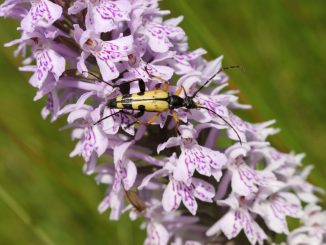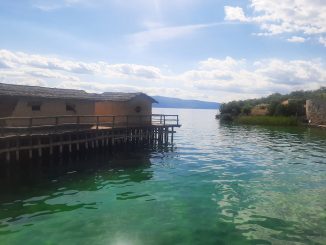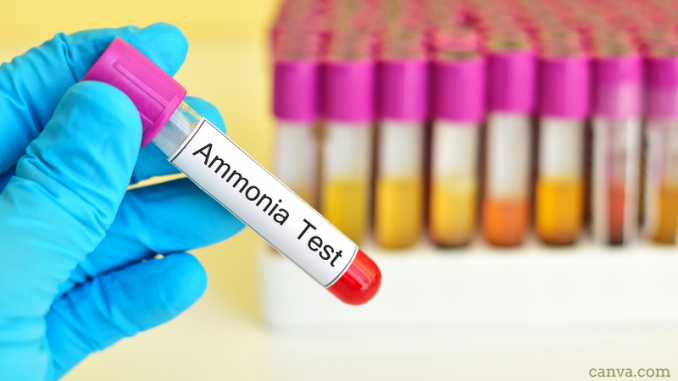
In Ireland, dangerous levels of ammonia emissions are driven largely by the burgeoning cattle population. Yet policymakers are turning a blind eye to the link between ammonia pollution and the expanding national herd. The evidence shows that Ireland is pursuing growth in the agri-food sector at the expense of air quality, biodiversity and human health, reports Alison Brogan.
Since 2016, Ireland has been exceeding its legal limit for ammonia emissions under the National Emission Ceilings (NEC) Directive. 2018 marked the third consecutive year that Ireland failed to comply with its binding ammonia ceiling, and emissions are projected to remain at unsustainable levels unless new measures are implemented.
Under the NEC Directive, which is transposed into Irish law by the European Union (National Emission Ceilings) Regulations 2018, Ireland is committed to a 5% reduction in ammonia emissions by 2030 compared to 2005 levels.
There is a clear warning in the Integrated Assessment of Ireland’s Environment recently published by the Environmental Protection Agency:
‘Limiting and reducing ammonia emissions in the future could be problematic given the strong performance of the agriculture sector, in line with the ambitious targets of Food Wise 2025 and the current discussions on the agri-food strategy to 2030’.
Ammonia gas, notable for its pungent odor, is a reactive form of Nitrogen. Although essential for life, excess ammonia in the atmosphere has detrimental effects on air quality, health and the environment, and it is therefore one of the five key air pollutants targeted in the EU’s Clean Air Package.
In nature, ammonia pollution can lead to biodiversity loss in both terrestrial and aquatic habitats. Soil acidification and toxic leaf damage occurring as a result of ammonia deposition can lead to declines in plant species diversity and composition. At worst, this type of damage can result in the loss of sensitive habitats. In freshwater ecosystems, ammonia can cause eutrophication resulting in algal blooms and oxygen depletion.
Ammonia can also adversely affect human health. In addition to potentially causing short-term eye and lung irritation, it is a precursor to particulate matter 2.5, a dangerous form of air pollution that can have serious long-term effects on cardiovascular and respiratory health.
Where does Ireland’s excess ammonia come from?
Agriculture accounts for 99.1% of ammonia emissions in Ireland, which stem from the volatilisation of a proportion of the nitrogen present in animal manure and chemical fertilisers. According to Ireland’s Environmental Protection Agency (EPA), 90% of ammonia emissions from agriculture are from animal manure, with chemical fertilisers and road transport accounting for the remainder. Increases in the national herd and fertiliser nitrogen use have driven the increase in ammonia emissions for the last six years.
The EPA’s breakdown of ammonia emissions from 1990 to 2030 (see graphic above) shows that Ireland is projected to continually breach its reduction commitments over the next decade. Considering that agriculture accounts for virtually all ammonia emissions, the agri-food sector faces an uphill battle to bring them within the legal limit. The growth ambitions of the sector, however, are at odds with the need to reduce ammonia emissions under the NEC Directive.
The agri-food sector has undergone significant transformation since Ireland joined the European Economic Community in 1973, becoming increasingly specialised and dominated by (dairy and beef) cattle and sheep livestock production, as noted in this report by the Department of Culture, Heritage and the Gaeltacht. Irish productivist agriculture – forged in the context of the Common Agricultural Policy (CAP) – is focused on maximising output typically through intensification, specialisation and export growth. This dominant development pathway is also termed ‘the productivist paradigm’.

Food Wise 2025
In 2015 Ireland’s Department of Agriculture, Food and the Marine (DAFM) rolled out the Food Wise 2025 strategy, the most recent in a lineage of industry led, growth oriented strategies for the agri-food sector. A stated objective of Food Wise 2025 is to realise the growth potential of the sector in an ‘environmentally efficient and sustainable manner’. The guiding principle is that ‘environmental protection and economic competitiveness are equal and complimentary: one will not be achieved at the expense of the other’. But while it states that ‘future food production systems must be as focused on managing and sustaining our natural resources as they are on increasing production’, the strategy envisages an expanding production scenario and sets ambitious value increase targets across the sector, including an 85% increase in the total value of exports to €19 billion and a 65% increase in the value of primary production to nearly €10 billion.
This vast export-driven growth is to be achieved with a particular emphasis on dairy, which is the most profitable sector at primary production level. Food Wise 2025 identifies the end of milk quotas as an opportunity, noting that the ‘abolition of the EU Milk Quota regime presents the Irish dairy sector with the freedom to realise its full potential in terms of output, export earnings, rural employment and investment but this growth must be undertaken in a sustainable manner and not at the expense of the environment and our natural resources’.
Although Food Wise 2025 does not set out specific proposals for expansion and opts instead to identify value increases, one beef sector action area identified provides for the investigation and development of ‘viable alternative markets for the additional prime cattle arising from dairy herd expansion’.
Food Wise 2025 emphasises that mitigating measures are intended to reduce environmental impacts in the selected development pathway. Attempting to integrate the strategy’s objectives of environmental protection and economic competitiveness, a ‘Sustainable Growth Scenario’ is selected as the framework within which Food Wise 2025 was to be developed.
According to the accompanying Strategic Environmental Report, the Sustainable Growth Scenario ‘imposes responsibilities on the agri-food and marine industry to develop appropriate and effective mitigation strategies to ensure that any increases in primary production can only occur having full regard to Ireland’s national and international obligations specifically in relation to: the maintenance and improvement of biodiversity; the maintenance and improvement of water quality status; and the improvement of air quality including a reduction in GHG emissions.’ (emphasis added)
Unfortunately, the environmental promises of Food Wise 2025 fall flat. The EPA finds that the strategy has failed to fulfil its environmental objectives: environmental protection and economic competitiveness have not been considered equally and food production systems are not as focused on managing and sustaining our natural resources as they are on increasing production. In the case of ammonia emissions, the evidence is unequivocal.
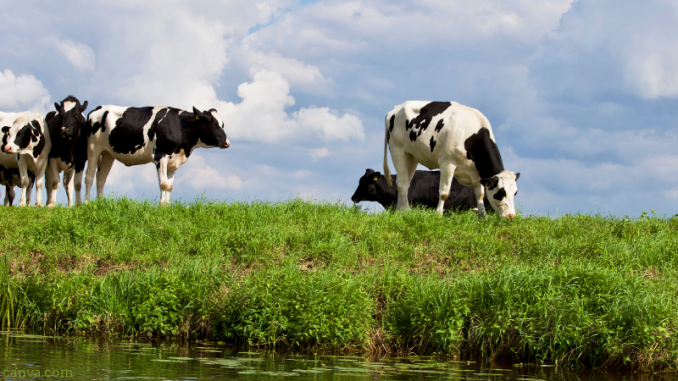
Agricultural growth and rising ammonia emissions
According to the EPA, the ammonia emissions trend is largely determined by the cattle population. DAFM itself recognises that rising ammonia emissions are predominantly driven by the sector’s growth plans, as well as the removal of the EU Milk Quota which has resulted in increases in cattle numbers, dairy production and fertiliser use: ‘it is a substantial challenge… to reconcile activity growth with a declining (ammonia emission) ceiling’.
This conflict between the growth targets in Food Wise 2025 and ammonia reduction commitments is echoed in the EPA’s recent conclusion that ‘economic growth in the agri-food sector in recent years is happening at the expense of the environment’.
As of 2019, EU Member States have been obliged to submit a National Air Pollution Control Programme (NAPCP), which reports on both air quality and air pollution emissions including ammonia, to the European Commission every four years. The Commission’s Review of Ireland’s first NAPCP observes that the country is at high risk of missing its binding emission reduction commitments for ammonia in 2030.
As a result Ireland is required to introduce additional Policies and Measures (PaMs) to tackle ammonia emissions in agriculture, namely: the Nitrates Action Programme; Low Emissions Slurry Spreading Systems; the Code of Good Agricultural Practice (voluntary guidelines on best practice for reducing ammonia emissions); Teagasc’s National Farm Survey; the ‘Origin Green’ sustainability programme; a Knowledge Transfer Programme and a Beef Data and Genomics Programme.
The Commission notes that projections of ammonia emissions even under the ‘With Additional Measures’ scenario show that Ireland ‘cannot comply with the 2020-29 reduction commitments specified in the NECD with additional measures’ and therefore ‘further additional measures’ are necessary.
Moreover, a report which accompanies the Commission’s review finds that the trend of increasing ammonia emissions projected to occur between 2020 and 2030 is driven by economic growth ‘which more than offsets the impact of existing and future PaMs on emissions’. This suggests that ‘the current additional PaMs have a very small impact on the emissions’.
Ammonia emission reduction targets could be reached through restrictions on levels of agriculture activity. However when it comes to agri-food development and environmental policy, Irish policy makers and the wider agri-food industry are facing a dilemma. As Teagasc observes: ‘such choices would conflict with other national policy objectives, such as those set out in the Food Harvest 2020 and Food Wise 2025 strategies that seek to grow the contribution of the Irish agri-food sector to the Irish economy’.
Resolving the dilemma
Teagasc, the state’s agriculture and food development authority, recently published an updated Analysis of the Cost of the Abatement of Ammonia Emissions in Irish Agriculture to 2030 which makes projections based on a number of assumed ammonia mitigation measures and varying levels of expansion and/or contraction of livestock numbers.
The analysis finds that in its modelled Baseline Scenario, full implementation of the mitigation pathways it outlines will ‘allow Ireland to comply with the NECD (conditional on the assumed measure uptake)’.
However, the Baseline Scenario adopted in the Teagasc abatement analysis assumes a 2% decrease in total cattle population between 2018 – 2030. This differs from the projections of a study from 2018 in which the Baseline Scenario adopted to best represent how Irish agricultural activity is likely to develop assumes a 6% increase in Ireland’s cattle population between 2005 and 2030.
According to Central Statistics Office data (available here and here) Ireland’s cattle population increased by 5% between 2005 and 2018.
Under the model which assumes a 6% expansion of the cattle population between 2005 and 2030, this would imply that the cattle numbers will increase more by 2030, yet successful compliance with the NEC Directive in the Baseline Scenario of Teagasc’s abatement analysis is contingent on full implementation of the identified mitigation pathways along with a 2% decrease in the national cattle population (and a 10% contraction in sheep numbers).
What’s more, there are serious limitations on the potential impact of abatement measures set out in the abatement analysis; for instance, ‘the use of amendments to lower ammonia emissions from slurry during storage’, is a mitigation measure that is proposed but has not yet been applied in the Irish context.
Other measures identified in the abatement analysis include: the liming of soils; the replacement of straight urea and CAN based fertilisers with protected urea; the use of LESS systems; the covering of slurry stores for all bovine manure generated; and reducing crude protein in feed.
With regard to the level of uptake of LESS, a Food Wise 2025 progress update, Steps to Success 2018, reports that that there had been 1,884 applications for grant aid under the the Targeted Agricultural Modernisation Schemes (TAMS) to date, which is relatively low considering there are some 120,000 livestock farms in the country, extrapolating from figures in this Agriland article.
As Teagasc’s abatement analysis acknowledges, the ammonia reductions under the Baseline Scenario ‘represent the maximum biophysical abatement potential and achieving this level of reductions (for example replacing urea with urease-stabilised urea) could prove extremely challenging’. As such, significant economic, cultural and social barriers would need to be overcome if measures are to be implemented to the required extent.
This needs to be taken into account in the ongoing development of Ireland’s CAP Strategic Plan if there is to be any hope of providing farmers with the support they need to enact significant changes to reduce ammonia emissions.
But as has been indicated by the EPA, DAFM and the European Commission, ammonia mitigation measures alone are unlikely to bring about the necessary reductions. The fact remains that the national herd (which is likely to increase further) is incompatible with a declining ammonia ceiling – the authorities must give this serious consideration.
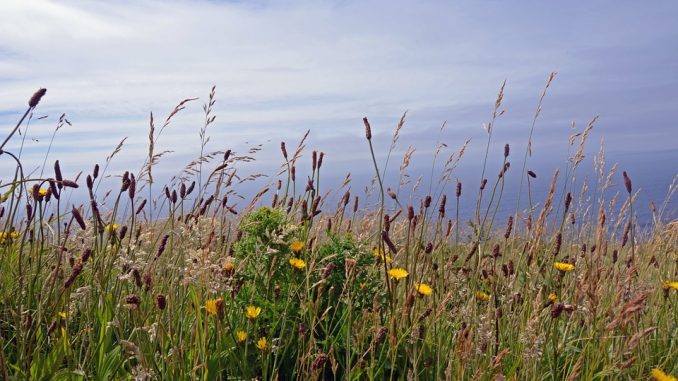
Something’s got to give
By risking penalisation for breaching legally binding ammonia reduction commitments, Ireland goes against the ambition stated its Food Wise 2025 strategy ‘that the (agri-food) sector is not only committed to meeting its various obligations set out in the framework of relevant environmental legislation, but also the sector aims to achieve higher standards to underscore its sustainability credentials’.
According to Food Wise 2025’s Strategic Environmental Report: ‘the Sustainable Growth strategy dictates that new mitigation measures must be brought forward prior to any increases in livestock numbers or other actions which would have the effect of increasing GHG, ammonia emissions to air’.
It would be reasonable to assume that these promises would mean that mitigation must at least occur to the extent that it brings emissions within legally permitted levels before expansion is permitted. In reality, however, the national herd has expanded in recent years notwithstanding the failure of mitigation measures to bring Ireland in compliance with its legally binding ammonia ceiling.
Ireland’s agricultural development pathway is driving noncompliance with the NEC Directive. The Food Wise 2025 strategy states that environmental protection and economic competitiveness will be equal and complimentary, yet the evidence in the case of ammonia emissions clearly refutes this claim; economic growth targets have been – and continue to be – pursued at the expense of air quality, biodiversity and human health.
The EPA’s Integrated Assessment asserts that business-as-usual scenarios will not reverse growth trends in ammonia emissions. The development route etched into the Food Wise 2025 strategy and its predecessors needs to be reassessed. Food Wise 2025’s description of Ireland as a “world leader in sustainable production” requires urgent action if it is to be substantiated.
There must be immediate and focused farm level implementation of existing and additional measures to reduce ammonia emissions, as recommended by the EPA and Teagasc, and required by the European Commision. Additionally, future agri-food strategies must pave the way for a holistic approach to agricultural development in Ireland that meaningfully encompasses environmental, social and economic justice.
Ireland’s 2030 Agri-Food Strategy, which is currently under development, should be used to catalyse this change, incorporating EU Green Deal and Farm to Fork Strategy principles into its framework as a starting point to reroute towards a just transition for the sector.
Alison Brogan completed an MSc with the Centre for Cooperative Studies, University College Cork in 2020. This article is drawn research Alison undertook when studying there.
More on Ireland
Farming as its Ferment to be? Korean Natural Farming in Ireland
Farm-2-Fork 2030: A Truly Green Farming, Food and Rural Vision for Ireland
Farm Diversification – Agroforestry and Agritourism in Ireland
Rural Dialogues | What are the 3 A’s of Feeding Ourselves in Ireland?



